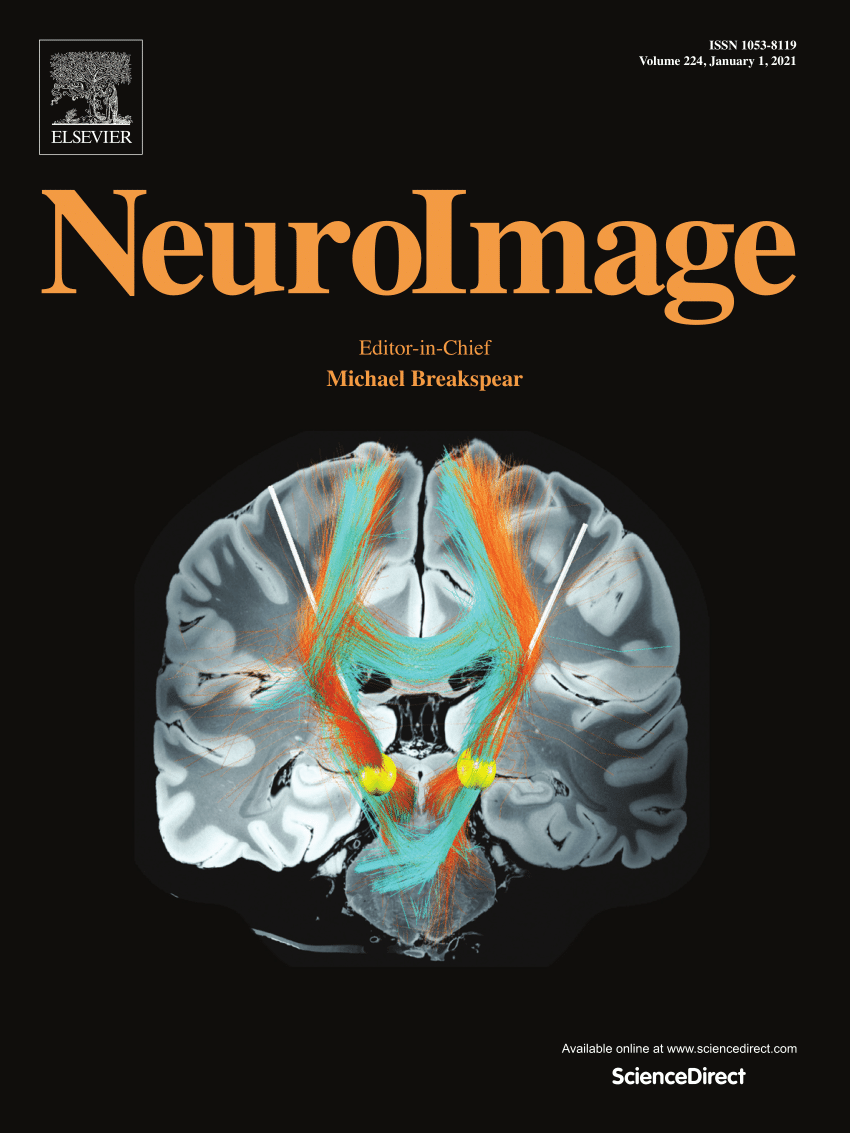呈现不同持续时间的威胁刺激的视觉感觉辨别:脑磁图和行为研究。
IF 4.7
2区 医学
Q1 NEUROIMAGING
引用次数: 0
摘要
时间暴露是否会影响对情绪刺激的视觉感官处理是一个尚未探讨的问题,尽管它与理解情绪处理息息相关。我们记录了 25 名参与者在观察蜘蛛(情绪刺激)和车轮(中性)剪影时的脑磁图(MEG)活动--具体地说是事件相关磁场(ERF)。这些刺激分别在 33.33、66.66、133.33 和 266.66 毫秒内出现,可能出现在屏幕中央(固定位置)或下部视野(周边)。行为表现显示,在定点处对负面情绪刺激的检测能力有所提高,而且这种效应与暴露时间没有相互影响。在神经水平上,当蜘蛛出现在定点时,在两个视觉ERF成分(M100和M150)中蜘蛛的振幅比车轮的振幅大,这种效应分别源于纹状体和离体视觉皮层。这种效应在刺激出现在外围(M210,估计在外侧皮层)时出现得较晚,而且与刺激持续时间无关。视觉皮层的这种威胁检测机制与刺激持续时间无关,这表明情绪线索在暴露时间上的感官辨别是全有或全无,而不是渐进的。本文章由计算机程序翻译,如有差异,请以英文原文为准。
Visual sensory discrimination of threatening stimuli presenting different durations: A magnetoencephalographic and behavioral study
Whether time exposure influences visual sensory processing of emotional stimulation is an unexplored issue, despite its relevance to understanding affective processing. We recorded magnetoencephalographic (MEG) activity -concretely event-related magnetic fields (ERFs)- from 25 participants while attending to spiders (emotional stimuli) and wheels (neutral) silhouettes they had to categorize. These stimuli were presented during 33.33, 66.66, 133.33, and 266.66 ms, and could appear at the center of the screen (fixation) or in the lower visual field (periphery). Behavioral performance revealed improved detection of negative emotional stimuli at fixation, and this effect did not interact with exposure time. At the neural level, greater amplitudes for spiders than for wheels were observed when presented at fixation in two visual ERF components, M100 and M150, an effect originating in striate and extrastriate visual cortices, respectively. This effect, ocurring later for stimuli presented at the periphery (M210, estimated in the extrastriate cortex), neither interacted with stimulus duration. This threat detection mechanism in the visual cortex independent of stimulus duration points to an all-or-nothing, rather than gradual, sensory discrimination of emotional cues regarding their exposure time.
求助全文
通过发布文献求助,成功后即可免费获取论文全文。
去求助
来源期刊

NeuroImage
医学-核医学
CiteScore
11.30
自引率
10.50%
发文量
809
审稿时长
63 days
期刊介绍:
NeuroImage, a Journal of Brain Function provides a vehicle for communicating important advances in acquiring, analyzing, and modelling neuroimaging data and in applying these techniques to the study of structure-function and brain-behavior relationships. Though the emphasis is on the macroscopic level of human brain organization, meso-and microscopic neuroimaging across all species will be considered if informative for understanding the aforementioned relationships.
 求助内容:
求助内容: 应助结果提醒方式:
应助结果提醒方式:


